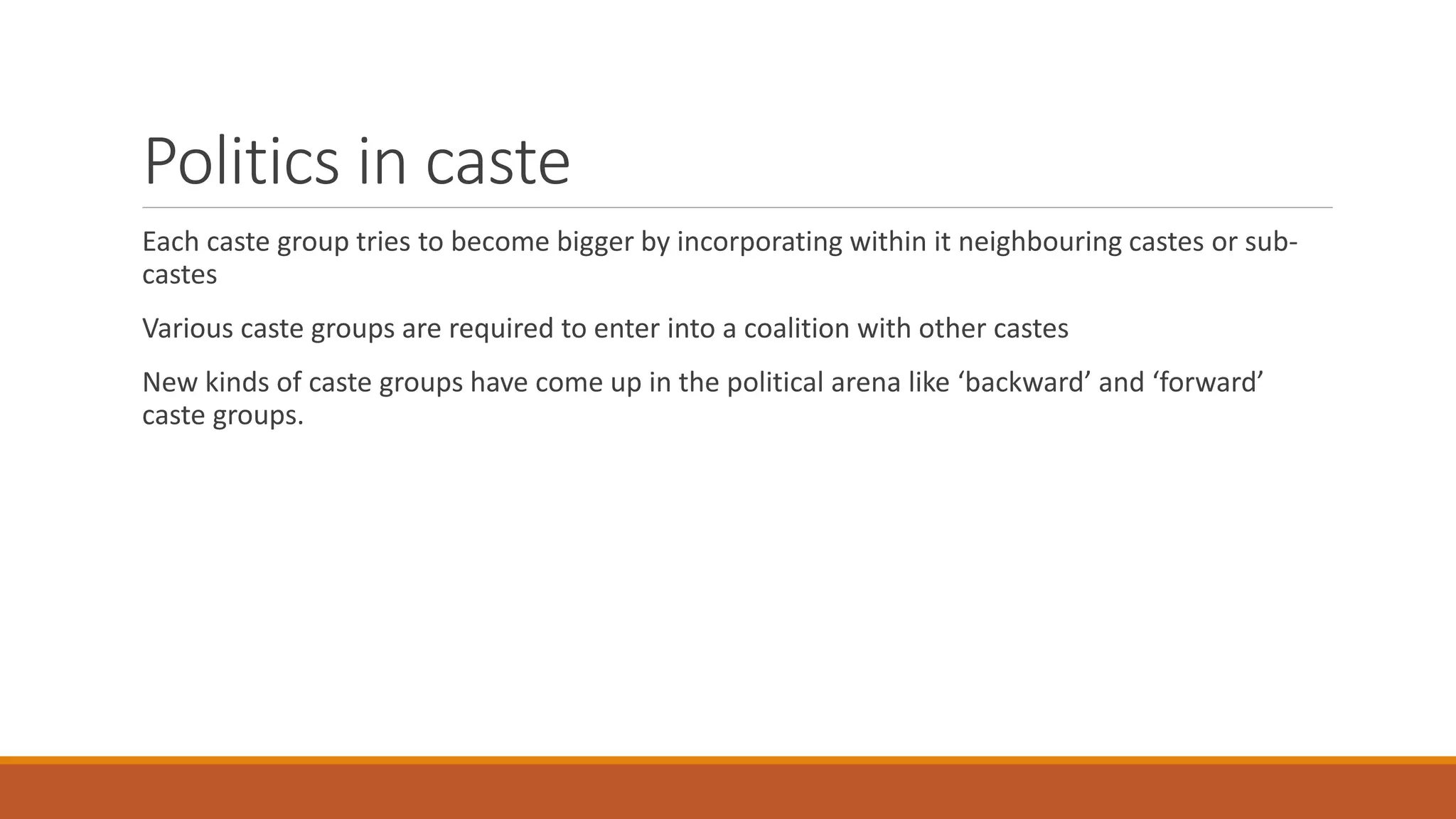This document discusses gender division and discrimination as well as efforts towards equality. It notes that traditionally women had minimal roles in public life and politics, but feminist movements have aimed to increase equality. While literacy and representation of women have increased, discrimination persists in areas like pay and treatment of women. The document also discusses caste division in India and how political parties take caste into account when selecting candidates to appeal to various groups, though voters also consider other factors beyond caste alone.













